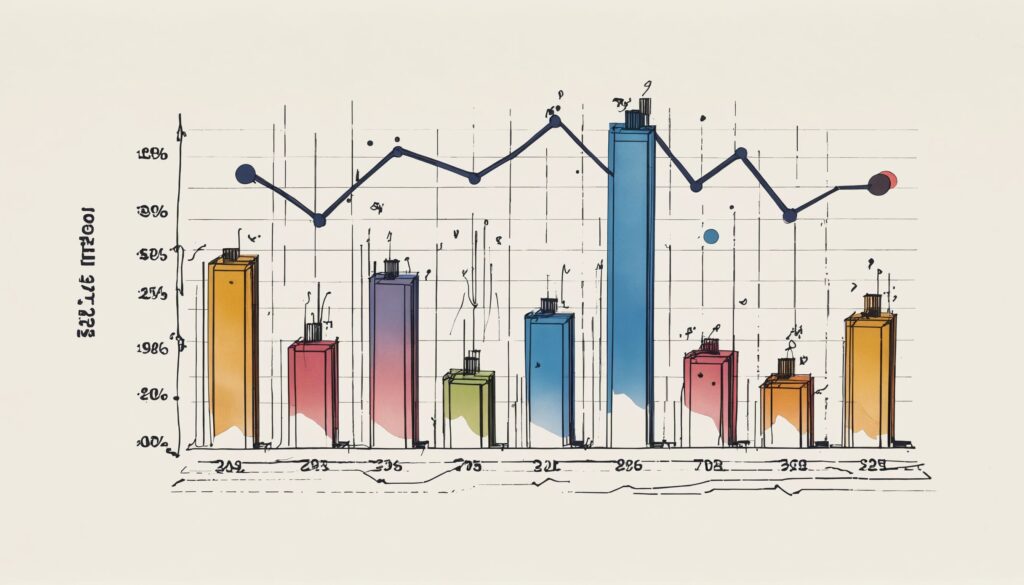The Lifeblood of the Digital World: Website Traffic
Imagine opening a brand-new store in the middle of nowhere. The shelves are stocked, the lights are on, but… crickets. No visitors, no buyers, just you and your doomed dream. That’s exactly what happens when you launch a website without traffic. Website traffic is the oxygen of the online world—without it, your digital presence withers away into irrelevance.
But not all traffic is created equal. There’s the high-quality, engaged audience that converts into customers, and then there’s the abyss of random clicks, bots, and accidental visits that do nothing for your business. Understanding the different types of website traffic, how to measure it, and—most importantly—how to increase website traffic is the key to digital success.
Why Website Traffic Matters More Than You Think
- Traffic equals opportunity – More visitors mean more chances to convert, engage, and sell.
- Brand visibility and authority – A well-visited website builds credibility in your industry.
- SEO and ranking power – Higher traffic signals search engines that your site is relevant.
Let’s be blunt: If your website isn’t getting traffic, you might as well be screaming into the void. More visitors mean more opportunities to convert them into paying customers. Whether you’re running a blog, an e-commerce store, or a corporate website, traffic is the lifeblood that keeps your platform functioning.
Additionally, a steady stream of traffic boosts your brand’s authority. Google, Bing, and all their digital overlord cousins love websites that people actually visit. The more traffic you get, the higher you rank in search results, creating a virtuous cycle of visibility and engagement.
The Different Types of Website Traffic (And Why Some Are Useless)
- Organic traffic – Visitors who find your site via search engines.
- Direct traffic – People who type your domain directly into their browser.
- Referral traffic – Visitors who arrive through external links.
- Social media traffic – Users visiting from Facebook, Twitter, LinkedIn, etc.
- Email traffic – Clicks from email campaigns.
- Paid traffic – Visitors acquired through ads.
Organic traffic is the gold standard of website visitors. These people are actively searching for something you offer, and if your SEO game is strong, they’ll find you. It’s sustainable, cost-effective, and an indicator of genuine interest.
Direct traffic is usually associated with brand awareness. If people are typing in your website URL, congratulations—you’re memorable! But if your direct traffic is suspiciously high, you might have some bots lurking in the shadows.
Referral traffic is great because it means other websites trust you enough to link to your content. Social media traffic can be hit or miss—sometimes it’s quality engagement, other times it’s just people aimlessly scrolling.
Then there’s paid traffic. Yes, it can be effective, but let’s face it: paying for clicks that don’t convert is like setting money on fire.
Measuring Website Traffic: Because Guesswork Is for Amateurs
- Google Analytics – The king of traffic measurement tools.
- Session duration and bounce rate – Are visitors actually sticking around?
- Traffic sources – Where is your audience coming from?
- Conversion rate – Are visits translating into action?
Tracking website traffic without analytics is like flying blind. Google Analytics remains the undisputed champion of traffic measurement, offering insights into visitor behavior, session duration, and conversion rates.
Bounce rate is a critical metric—if visitors leave after just one page, something is clearly wrong. Either your content is unappealing, or your site loads slower than a snail on vacation.
Understanding where your traffic originates helps optimize marketing efforts. If organic search drives most of your visitors, invest in SEO. If social media is your biggest source, double down on content creation.
How to Increase Website Traffic (Without Selling Your Soul to Ads)
- Master SEO – Optimize content, build backlinks, and improve site speed.
- Leverage social media – Engage with audiences on Instagram, Twitter, and LinkedIn.
- Content is king – Publish high-quality, shareable content.
- Email marketing – Use newsletters to drive repeat traffic.
- Video marketing – YouTube and TikTok can be goldmines.
SEO isn’t just throwing keywords into a blender and hoping for the best. It requires strategic optimization, backlink building, and ensuring your website loads faster than your competitors’. Google loves a well-structured, fast-loading site with valuable content.
Social media is a traffic powerhouse, but only if used wisely. Posting random cat memes might get likes, but it won’t necessarily drive meaningful clicks to your site. Engage with your audience, provide value, and direct them to your content.
High-quality content is non-negotiable. If your blog posts read like a robot wrote them, visitors will bounce faster than a rubber ball. Inform, entertain, and solve problems to keep people coming back.
Email marketing remains one of the most underrated traffic drivers. A well-crafted newsletter can remind past visitors to return, engage with new content, or take advantage of an exclusive offer.
And let’s not forget video marketing. Platforms like YouTube and TikTok have massive audiences. A well-placed tutorial, explainer video, or engaging short-form content can drive visitors like never before.
Final Thoughts: Traffic Is the Currency of the Internet
Website traffic isn’t just a vanity metric—it determines the success of your online presence. More visitors mean more conversions, more authority, and higher rankings. But not all traffic is beneficial, and blindly chasing numbers without a strategy is a recipe for frustration.
Focus on attracting the right kind of visitors, measure your results, and continuously optimize your approach. Whether through SEO, content marketing, social media, or email campaigns, increasing website traffic is a long-term game. Play it right, and your website will thrive.
